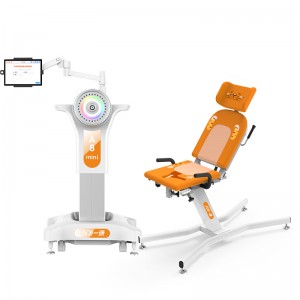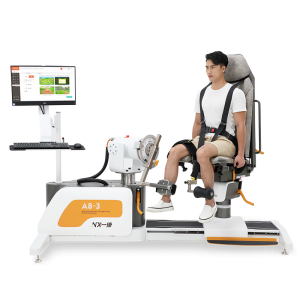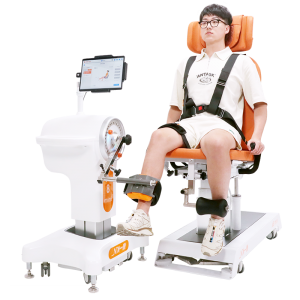Product Introduction
A8mini3 is a new type of multi joint isokinetic training and testing product. It is designed specifically for children and focuses on early isokinetic rehabilitation training and evaluation. Based on the changes in muscle strength during exercise, the exercise force generated by the child is transformed into torque, allowing the entire joint of the child to move at a certain speed during training. Isokinetic motion parameters are collected to explore the laws of muscle growth and development in children, providing theoretical basis for scientifically guiding children in physical exercise, enhancing physical fitness, and selecting athletes scientifically.
Application
The main roles of isokinetic techniques in rehabilitation assessment include:
① assessing the degree of joint, muscle, or nerve function damage;
② Measure the baseline value of the healthy side as the expected value of the rehabilitation treatment effect on the affected side;
③ Evaluate the effectiveness of rehabilitation treatment plans, monitor the rehabilitation process in real time, and adjust the rehabilitation plan in a timely manner.
The main functions of isokinetic techniques in rehabilitation training include:
① Being able to simultaneously train antagonistic and active muscles to output torque at any angle of movement, improving muscle strength;
② Improve accessory structures and neuromuscular function; Promote fluid circulation, relieve pain, and facilitate joint nutrition.
③ Improve blood circulation and promote the elimination of sterile inflammation.
④ Improve joint stability, improve motion control ability, etc.
The main role of isokinetic technology in neurological rehabilitation is:
①The repetitive sensory stimulation and repetitive actions of isokinetic movement can stimulate the nervous system to produce new adaptations.
② Gradually restore the brain’s control over paralyzed muscle groups and promote the recovery of neuromuscular function Isokinetic muscle strength training has a significant effect on improving walking ability, balance ability, and promoting the recovery of lower limb function in stroke patients with hemiplegia. It can improve patient prognosis and has good safety.
Isokinetic technology can also improve the prognosis of patients with patellar fractures, patellar chondropathy, total knee arthroplasty, knee meniscus injury after arthroscopy, and traumatic knee stiffness.










